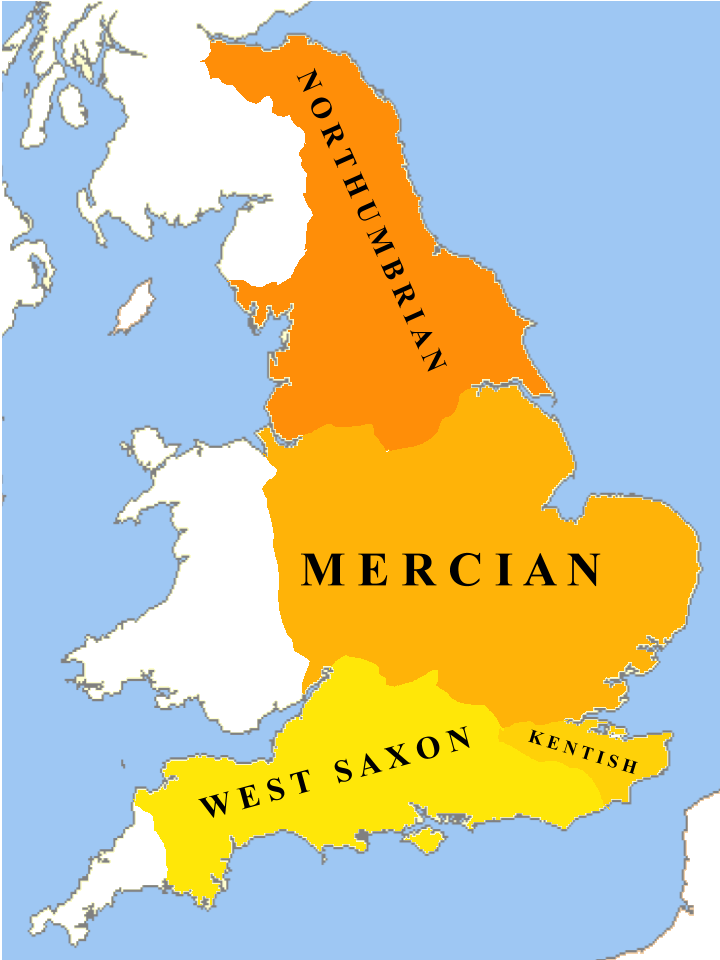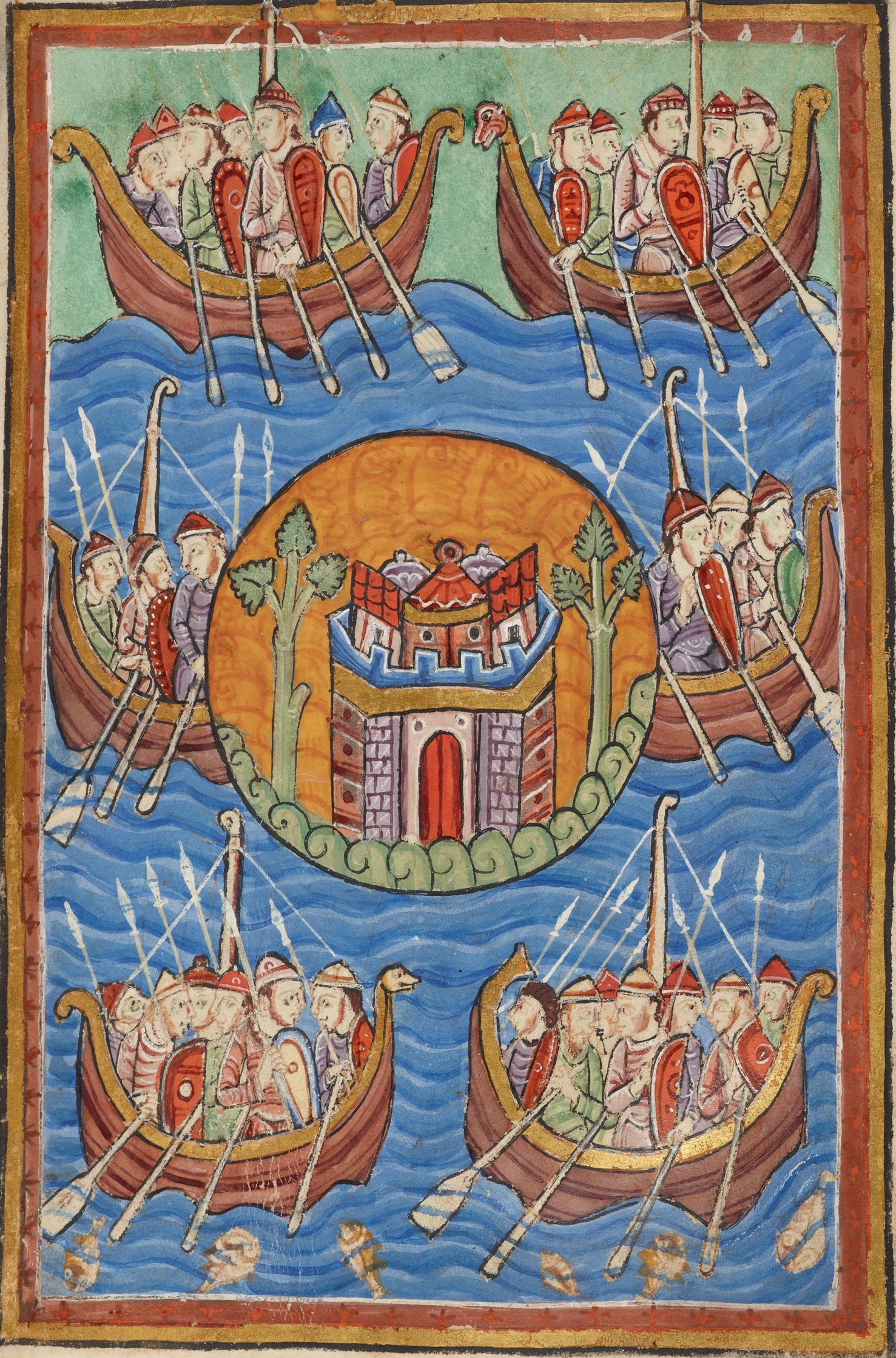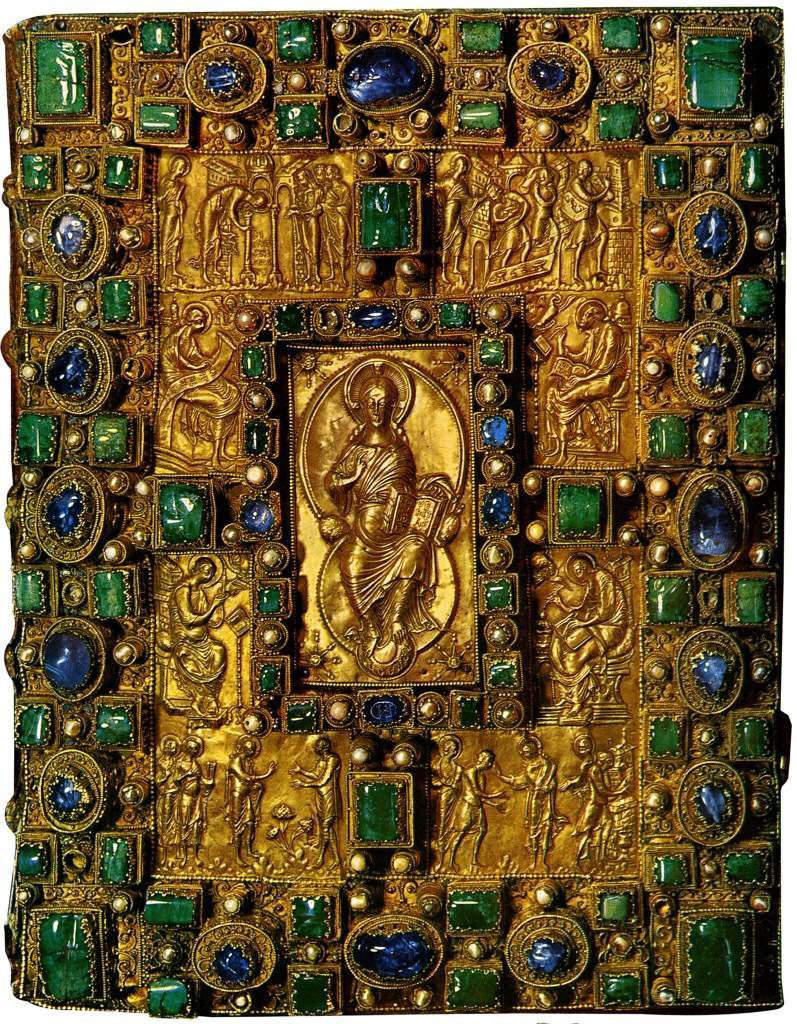|
Anglo-Saxon Language
Old English ( or , or ), or Anglo-Saxon, is the earliest recorded form of the English language, spoken in England and southern and eastern Scotland in the Early Middle Ages. It developed from the languages brought to Great Britain by Anglo-Saxon settlers in the mid-5th century, and the first Old English literature dates from the mid-7th century. After the Norman Conquest of 1066, English was replaced for several centuries by Anglo-Norman (a type of French) as the language of the upper classes. This is regarded as marking the end of the Old English era, since during the subsequent period the English language was heavily influenced by Anglo-Norman, developing into what is now known as Middle English in England and Early Scots in Scotland. Old English developed from a set of Anglo-Frisian or Ingvaeonic dialects originally spoken by Germanic tribes traditionally known as the Angles, Saxons and Jutes. As the Germanic settlers became dominant in England, their language ... [...More Info...] [...Related Items...] OR: [Wikipedia] [Google] [Baidu] |
Beowulf
''Beowulf'' (; ) is an Old English poetry, Old English poem, an Epic poetry, epic in the tradition of Germanic heroic legend consisting of 3,182 Alliterative verse, alliterative lines. It is one of the most important and List of translations of Beowulf, most often translated works of Old English literature. The date of composition is a matter of contention among scholars; the only certain dating is for the manuscript, which was produced between 975 and 1025 AD. Scholars call the anonymous author the "''Beowulf'' poet". The story is set in pagan Scandinavia in the 5th and 6th centuries. Beowulf (hero), Beowulf, a hero of the Geats, comes to the aid of Hrothgar, the king of the Danes (Germanic tribe), Danes, whose mead hall Heorot has been under attack by the monster Grendel for twelve years. After Beowulf slays him, Grendel's mother takes revenge and is in turn defeated. Victorious, Beowulf goes home to Geatland and becomes king of the Geats. Fifty years later, Beowulf def ... [...More Info...] [...Related Items...] OR: [Wikipedia] [Google] [Baidu] |
Old English Latin Alphabet
The Old English Latin alphabet generally consisted of about 24 letters, and was used for writing Old English from the 8th to the 12th centuries. Of these letters, most were directly adopted from the Latin alphabet, two were modified Latin letters ( Æ, Ð), and two developed from the runic alphabet (Wynn, Ƿ, Thorn (letter), Þ). The letters Q and Z were essentially left unused outside of foreign names from Latin and Greek. The letter J had not yet come into use. The letter K was used by some writers but not by others. W gained usage in late Old English under Norman Conquest, Norman influence, as seen towards the end of the Peterborough Chronicle manuscript, though in this period W was still a ligature and not a full-fledged letter. The manuscripts , , and differ in how they arrange the non-standard Old English letters (Harley has Ƿ–ЖƖÞ, Stowe has Ƿ–ЖÞ, Titus has Ƿ–Þ–Ð), but all three manuscripts place them after the standard Latin letters. Hi ... [...More Info...] [...Related Items...] OR: [Wikipedia] [Google] [Baidu] |
Ingvaeonic
North Sea Germanic, also known as Ingvaeonic ( ), is a subgrouping of West Germanic languages that consists of Old Frisian, Old English, and Old Saxon, and their descendants. These languages share a number of commonalities, such as a single plural ending for all persons of the verb, the Ingvaeonic nasal spirant law, common changes to the Germanic vowel ''*a'', a plural form ''-as'', and a number of other features which make scholars believe they form a distinct group within West Germanic. It is debated whether the shared features of North Sea Germanic are inherited from a common proto-language or formed via later contact and influence. Additionally, the membership of the group is sometimes debated. Some scholars exclude Low German for lacking a number of features associated with North Sea Germanic. Other scholars include Dutch for sharing some features with the group. Name The name Ingvaeonic derives from ancient Roman sources such as Tacitus, who describes a tribal group cal ... [...More Info...] [...Related Items...] OR: [Wikipedia] [Google] [Baidu] |
Langues D'oïl
The ''langues d'oïl'' are a dialect continuum that includes standard French and its closest relatives historically spoken in the northern half of France, southern Belgium, and the Channel Islands. They belong to the larger category of Gallo-Romance languages, which also include the historical languages of east-central France and western Switzerland, southern France, portions of northern Italy, the Val d'Aran in Spain, and under certain acceptations those of Catalonia. Linguists divide the Romance languages of France, and especially of Medieval France, into two main geographical subgroups: the ''langues d'oïl'' to the North, and the '' langues d'oc'' in the Southern half of France. Both groups are named after the word for "yes" in their recent ancestral languages. The most common modern ''langue d'oïl'' is standard French, in which the ancestral "oïl" has become . Terminology ''Langue d'oïl'' (in the singular), ''Oïl dialects'' and ''Oïl languages'' (in the plural) ... [...More Info...] [...Related Items...] OR: [Wikipedia] [Google] [Baidu] |
Anglo-Norman Language
Anglo-Norman (; ), also known as Anglo-Norman French, was a dialect of Old Norman that was used in Kingdom of England, England and, to a lesser extent, other places in Great Britain and Ireland during the Anglo-Normans, Anglo-Norman period. Origin The term "Anglo-Norman" harks back to the time when the language was regarded as being primarily the regional dialect of the Norman settlers. Today the generic term "Anglo-French" is used instead to reflect not only the broader origin of the settlers who came with William the Conqueror, but also the continued influence of Parisian French from the House of Plantagenet, Plantagenet period onwards. According to some linguists, the name Insular French might be more suitable, because "Anglo-Norman" is constantly associated with the notion of a mixed language based on English and Norman. According to some, such a mixed language never existed. Other sources, however, indicate that such a language did exist, and that it was the language desc ... [...More Info...] [...Related Items...] OR: [Wikipedia] [Google] [Baidu] |
Norman Conquest
The Norman Conquest (or the Conquest) was the 11th-century invasion and occupation of England by an army made up of thousands of Normans, Norman, French people, French, Flemish people, Flemish, and Bretons, Breton troops, all led by the Duke of Normandy, later styled William the Conqueror. William's claim to the English throne derived from his familial relationship with the childless Anglo-Saxon king Edward the Confessor, who may have encouraged William's hopes for the throne. Edward died in January 1066 and was succeeded by his brother-in-law Harold Godwinson. The Norwegian king Harald Hardrada invaded northern England in September 1066 and was victorious at the Battle of Fulford on 20 September, but Godwinson's army defeated and killed Hardrada at the Battle of Stamford Bridge on 25 September. Three days later on 28 September, William's invasion force of thousands of men and hundreds of ships landed at Pevensey in Sussex in southern England. Harold marched south to oppose ... [...More Info...] [...Related Items...] OR: [Wikipedia] [Google] [Baidu] |
Old English Literature
Old English literature refers to poetry (alliterative verse) and prose written in Old English in early medieval England, from the 7th century to the decades after the Norman Conquest of 1066, a period often termed Anglo-Saxon England. The 7th-century work '' Cædmon's Hymn'' is often considered as the oldest surviving poem in English, as it appears in an 8th-century copy of Bede's text, the '' Ecclesiastical History of the English People''. Poetry written in the mid 12th century represents some of the latest post-Norman examples of Old English. Adherence to the grammatical rules of Old English is largely inconsistent in 12th-century work, and by the 13th century the grammar and syntax of Old English had almost completely deteriorated, giving way to the much larger Middle English corpus of literature. In descending order of quantity, Old English literature consists of: sermons and saints' lives; biblical translations; translated Latin works of the early Church Fathers; chronicl ... [...More Info...] [...Related Items...] OR: [Wikipedia] [Google] [Baidu] |
Anglo-Saxon Settlers
The settlement of Great Britain by Germanic peoples from continental Europe led to the development of an Anglo-Saxons, Anglo-Saxon cultural identity and a shared Germanic language—Old English—whose closest known relative is Old Frisian, spoken on the other side of the North Sea. The first Germanic speakers to settle Britain permanently are likely to have been soldiers recruited by the Roman administration in the 4th century AD, or even earlier. In the early 5th century, during the end of Roman rule in Britain and the breakdown of the Roman economy, larger numbers arrived, and their impact upon local culture and politics increased. There is Historiography of the Anglo-Saxon settlement of Britain, ongoing debate about the scale, timing and nature of the Anglo-Saxon settlements and also about what happened to the existing populations of the regions where the migrants settled. The available evidence includes a small number of medieval texts which emphasize Saxons, Saxon settle ... [...More Info...] [...Related Items...] OR: [Wikipedia] [Google] [Baidu] |
Great Britain
Great Britain is an island in the North Atlantic Ocean off the north-west coast of continental Europe, consisting of the countries England, Scotland, and Wales. With an area of , it is the largest of the British Isles, the List of European islands by area, largest European island, and the List of islands by area, ninth-largest island in the world. It is dominated by a maritime climate with narrow temperature differences between seasons. The island of Ireland, with an area 40 per cent that of Great Britain, is to the west – these islands, along with over List of islands of the British Isles, 1,000 smaller surrounding islands and named substantial rocks, comprise the British Isles archipelago. Connected to mainland Europe until 9,000 years ago by a land bridge now known as Doggerland, Great Britain has been inhabited by modern humans for around 30,000 years. In 2011, it had a population of about , making it the world's List of islands by population, third-most-populous islan ... [...More Info...] [...Related Items...] OR: [Wikipedia] [Google] [Baidu] |
Early Middle Ages
The Early Middle Ages (or early medieval period), sometimes controversially referred to as the Dark Ages (historiography), Dark Ages, is typically regarded by historians as lasting from the late 5th to the 10th century. They marked the start of the Middle Ages of History of Europe, European history, following the decline of the Roman Empire, decline of the Western Roman Empire, and preceding the High Middle Ages ( 11th to 14th centuries). The alternative term ''Late antiquity#Terminology, late antiquity'', for the early part of the period, emphasizes elements of continuity with the Roman Empire, while ''Early Middle Ages'' is used to emphasize developments characteristic of the earlier medieval period. The period saw a continuation of trends evident since late classical antiquity, including population decline, especially in urban centres, a decline of trade, Medieval Warm Period, a small rise in average temperatures in the North Atlantic region and Migration Period, increased m ... [...More Info...] [...Related Items...] OR: [Wikipedia] [Google] [Baidu] |
English Language
English is a West Germanic language that developed in early medieval England and has since become a English as a lingua franca, global lingua franca. The namesake of the language is the Angles (tribe), Angles, one of the Germanic peoples that Anglo-Saxon settlement of Britain, migrated to Britain after its End of Roman rule in Britain, Roman occupiers left. English is the list of languages by total number of speakers, most spoken language in the world, primarily due to the global influences of the former British Empire (succeeded by the Commonwealth of Nations) and the United States. English is the list of languages by number of native speakers, third-most spoken native language, after Mandarin Chinese and Spanish language, Spanish; it is also the most widely learned second language in the world, with more second-language speakers than native speakers. English is either the official language or one of the official languages in list of countries and territories where English ... [...More Info...] [...Related Items...] OR: [Wikipedia] [Google] [Baidu] |
West Saxon Dialect
West Saxon is the term applied to the two different dialects Early West Saxon and Late West Saxon with West Saxon being one of the four distinct regional dialects of Old English. The three others were Kentish, Mercian and Northumbrian (the latter two were similar and are known as the Anglian dialects). West Saxon was the language of the kingdom of Wessex, and was the basis for successive widely used literary forms of Old English: the Early West Saxon of Alfred the Great's time, and the Late West Saxon of the late 10th and 11th centuries. Due to the Saxons' establishment as a politically dominant force in the Old English period, the West Saxon dialects became the strongest dialects in Old English manuscript writing. Early West Saxon Early West Saxon was the language employed by King Alfred (849–899), used in the many literary translations produced under Alfred's patronage (and some by Alfred himself). It is often referred to as Alfredian Old English, or Alfredian. The langu ... [...More Info...] [...Related Items...] OR: [Wikipedia] [Google] [Baidu] |







